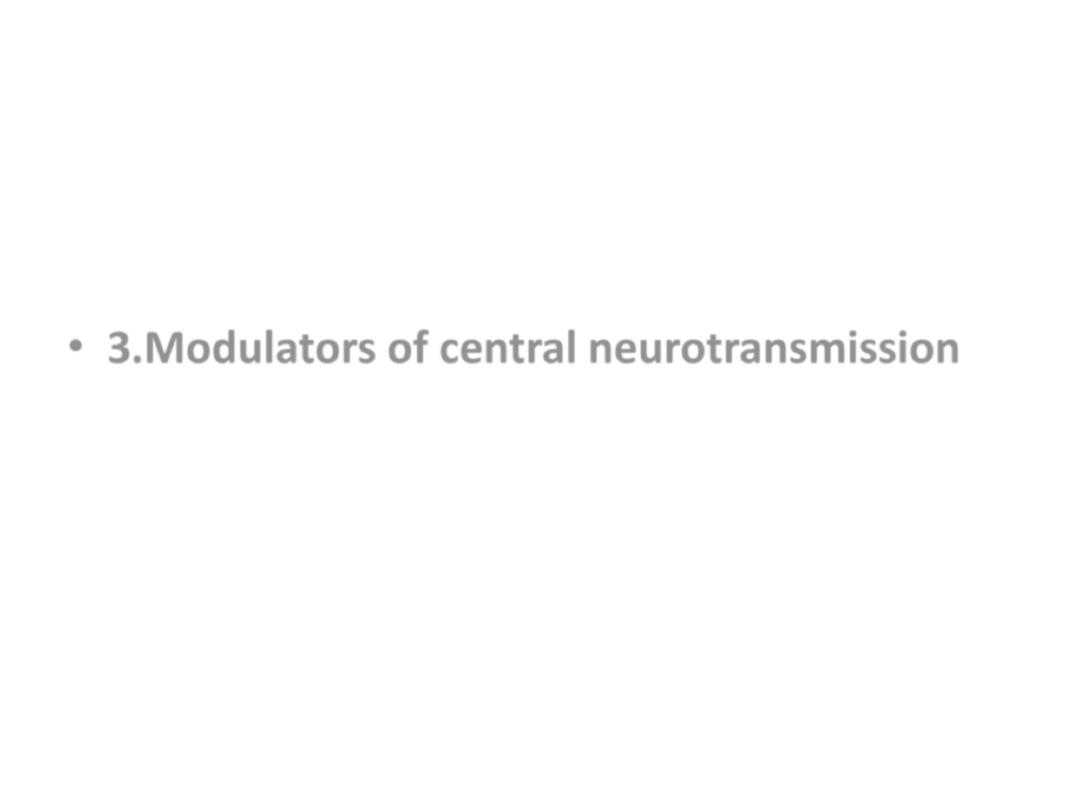
Menopause

Definition
• The menopause
• is defined as the woman’s final menstrual period
and the diagnosis made retrospectively after 1
year of amenorrhoea.
• The cause of the menopause is cessation of
regular
ovarian function.

Climacteric or perimenopause
Is the transitional phase during which
reproductive function ceases . It is usu.
Associated with a change in the length of
the menstrual cycles , it is often also
associated with development of typical
oestrogen – deficiency symptoms such as
hot flushes and night
sweats

• Postmenopause: all women who have been
1 year since their last period.Duration of
climacteric usu. 2 years .
• These endocrine, biomarker and menstrual
changes have recently been studied
• and documented by the Stages of
Reproductive Aging Workshop + 10 (STRAW
+ 10)

Range of menopause : 45 – 55 years ,mean is
51 years . Life expectancy now 81 years for
women , so now women spend one –half of
her life in postmenopausal state .
Pathophysiology :
Oestradiol can be considered as a byproduct
of oocyte maturation . Ovarian failure is due
to exhaustion of suitable oocytes &a lack of
response by the ovary to gonadotrophin
stimulation.

pathophysiology
Thus the plasma level of FSH &LH rise .The
primordial follicles number is 1.5 million at
birth ,
the number having sharply declined from a
peak of 7 million midway through gestation.
The two natural processes which reduce the
number of oocytes are atresia & ovulation .

Diagnosis
• The diagnosis of menopause is a largely clinical
diagnosis that is made according to symptoms
• experienced, such as menstrual irregularities
and amenorrhoea, and oestrogen deficiency
symptoms, such as vasomotor symptoms.
• The use of serum endocrine tests such as
hormone levels are of little value in the
perimenopausal years

Causes of menopause
1- premature ovarian failure : ovarian failure to generate oestrogen
at any age < 40 years. Incidence 1%.
Causes of POF
A. Primary
• Chromosome anomalies (e.g. Turner’s, fragile X)
• Autoimmune disease (e.g. hypothyroidism, Addison’s, myasthenia
gravis)
• Enzyme deficiencies (e.g. galactosaemia, 17a-hydroxylase
deficiency).
• B. secondary
• Chemotherapy or radiotherapy
• Infections (e.g. tuberculosis, mumps, malaria, varicella)

2- surgical menopause :if for any reason both
ovaries require to be removed surgically (an
obligatory menopause ).
3- drugs :use of GNRH agonists in treatment of
endometriosis or in pre – op. treatment of
leiomyoma fibroid.
4-management of malignant disease in young
women may provoke menopause in 2 ways :
A-example breast cancer radiation menopause may
still used to suppress oestrogen output .
B-use of chemotherapeutic agents in treatment of
breast carcinoma or lymphoma may arrest
ovarian cyclic activity.

Symptoms of menopause
1-Acute (0-5 years) neuro-endocrine
Hot flush , night sweats, insomnia , mood changes ,
irritability , loss of memory & concentration.
2-Intermediate (3-10 years) , lower urogenital tract :
Genital tract atrophy, dyspareunia , urethral syndrome .
3-Chronic (>10 years) :
A-arterial: coronary heart disease , thrombosis .
B-skeletal: osteoporosis
c- dementia..

Acute symptoms
The most typical acute symptoms are hot flushes
& night sweats which are experienced by about
50 – 75 % of women.
They may first arise 10 years before the
menopause .
75% of women experiencing vasomotor symptoms
will do so for periods of up to 5 years ; a
minority may experience them for many years .
Hot flushes are a vascular response to a central
disturbance of the thermoregulatory center in
the hypothalamus.

• there is a downshift of the set point of the
center in such that there is a frequent central
misapprehension of excess body temperature .
This in turn leads to activation of physiological
mechanisms such as cutaneous flushing &
perspiration , which result in loss of heat by
radiation & by loss of latent heat of
vaporization .If an episode occur at night , the
patient may experience from repeated
awakening from sleep with consequent loss of
sleep quantity and quality.

The hot flushes associated with an acute rise
in the skin temperature (about 2.7 c) ,with
peripheral vasodilatation & slight increase
in heart rate suggestive of a sudden
transient increase in sympathetic derive .
LH or the factors that trigger its pulsatile
release , are related to the mechanism
responsible for the initiation oh hot flushes
.

Vaginal dryness is an important symptom of
menopause & it leads to dyspareunia . The
vaginal skin is dependent on oestrogen for the
depth & lubrication of its squamous
epithelium & with the loss of plasma
oestrogen the skin becomes thin & poorly
moisturized (5-10% of women have lower
genital tract symptoms ) .

Psychological symptoms
The menopause also associated with
psychological symptoms which are
distressing & disabling . The degree to
which these symptoms are due to a lack of
oestrogen per se or to chronic sleep
deprivation is not settled .

Urinary symptoms
Menopausal women also frequently complain of
various urinary symptoms including dysuria ,
frequency , nocturia , urgency & incontinence &
recurrent U.T.I
The presence of oestrogen receptors in the
trigone & proximal urethra may explain these
symptoms.

Skeletal symptoms
During the reproductive years , the amount of bone
laid down corresponds to that which was
removed .
Following menopause with loss of circulating
oestrogen , there is a greater bone resorption
than formation, more bone remodelling units are
activated .
Postmenopausal bone loss affecta cancellous bone
which is found in vertebral bodies & at the end of
long bones.

Measurment of bone mass predicts risk of
fracture & most widely method is DEXA
dual energy x- ray absorptiometry.
Traumatic fracture affects distal radius &
femoral neck , while non- traumatic
fracture affects the vertebrae .

Cardiovascular system
The decline in the plasma oestrogen after the
menopause is attended by changes in lipid
profile that conductive to atherogenesis
Total cholesterol increase
HDL cholesterol decrease
LDL cholesterol increase
Triglycerides unchanged

In addition to the lipid effects , oestrogen is
also exert direct effects on the vessel wall .
Oestradiol stimulate the enzyme nitrogen
synthase whose product nitric oxide , is
both ( a vasodilator & an oxidant for
lipoprotein accumulating in the subintima
.Loss of oestrogen can thus result in a
promotion of both atherogenesis &
vasoconstriction.

Oestrogen also appear capable of
acting as calcium channel blockers &
inhibitors of ACE (angiotensin
converting enzyme ).

Other important effects of ovarian failure
The menopause have one beneficial effect
with respect to female mortality ; it is
associated with a slowing in the increase in
incidence of breast cancer , (the earlier the
menopause the earlier this effect . This
effect is mediated through oestradiol
deficiency .

Endocrine changes at climacteric
Phase 1 Hypothalamic – pitutary hyperactivity
A-starts 10-15 years before menopause .
B-compensatory for increased resistance of ovarian
follicles & decreased follicular hormone secretion
(inhibin)usually inhibit FSH.
C- evidenced by raised FSH & later LH & associated
with hot flushes . Pitutary may become
exhausted late postmenopause.

Phase 2 ovulation & corpus luteum failure
A-occurs in most women with increasing frequency
as menopause approaches . Anovulatory cycles
or shortened luteal phase .
B-deficient progesterone & continued unapposed
oestrogen secretion .
C-causes D.U.B , endometrial hyperplasia & ca.

Phase 3 ovarian follicular failure
A-failure of follicular development causes loss in
oestradiol secretion &cessation of menses .
B- ovarian stroma remains active , with adrenal
cortex produces androstenedione & testosterone
.c-oesterone produced by extraglandular
conversion of androgens :is main
postmenopausal oestrogen.
Only 10-50% postmenopausal women are
oestrogen deficient.

Management
• Diet and lifestyle
• regular exercise, stopping smoking and
• reducing alcohol consumption.
• reduced heart disease and the prevention of
lung cancer and liver disease.
• Beneficial effects on bone loss

Alternative and complementary
treatments
• Complementary drug-free therapies
• Acupuncture
• Reflexology
• Magnetism
• Reiki
• Hypnotism

Herbal/natural preparations
• Black cohosh
• Dong quai
• Evening primrose oil
• Gingko
• Ginseng
• Kava kava
• St John’s wort

‘Natural’ hormones
• Phytoestrogens such as isoflavones and
red clover
• Natural progesterone gel
• Dehydroepiandrosterone (DHEA)

Non-hormonal treatments for
vasomotor symptoms
• 1.Alpha-adrenergic agonists Clonidine
• 2.Beta-blockers Propanolol
• 3.Modulators of central neurotransmission
• Venlafaxine
• Fluoxetine
• Paroxetine
• Citalopram
• Gabapentin

Hormonal replacement therapy
Types of hormones contained in HRT
• Oestrogens
• If oestrogen is given without progestogenic
opposition, there is a risk that in time
endometrial hyperplasia and cancer may
develop.
• Systemic oestrogen-only HRT is suitable for
women who no longer have a uterus following
a hysterectomy.

Oestrogen with progestogen
• The administration of progestogen is necessary to
protect the endometrium in women who have
not had a hysterectomy.
• (cyclical HRT).
• It is normally given cyclically in preparations over
a 28-day cycle, of which 16–18 days
will provide oestrogen alone and 10–12 days will
provide oestrogen and progesterone combined

• If the last menstrual period occurred less than 1
year prior to starting HRT a sequential combined
regimen is recommended.
• This results in regular monthly menstruation.
• After 1 year of therapy (2 years in POI) women
can switch to a continuous combined regimen
that aims to give a bleed‐free HRT regimen,
which will also minimize the risk of endometrial
hyperplasia.

continuous combined HRT
• These are usually preparations with the same
dose of daily oestrogen combined with a smaller
dose of progestogen taken every day.
Progestogens:
• • norethisterone; levonorgestrel, dydrogesterone;
• • medroxyprogesterone acetate;
• • drospirenone;
• • micronized progesterone.

Testosterone
• given to women with disorders of sexual
desire and energy levels.

Routes of hormone therapy administration
• The oral route is convenient and cheap but does
influence lipid metabolism and the coagulation
system through its effects on the liver during
first-pass metabolism.
• The transdermal route, either given as patches
applied to the skin on the trunk or as gel, with
the advantage of delivery of oestradiol directly
into the circulation, avoiding the above
potentially adverse effects on the liver and the
coagulation system.

Vaginal oestrogen
• use of creams, tablets and rings delivering
estriol and estradiol. important in the
management of lower genital tract symptoms.
• Progestogen in the form of levonorgestrel may
be administered as an intrauterine releasing
system (IUS), Mirena. This device not only
provides contraception and control of
troublesome bleeding, but also provides
endometrial protection for up to 5 years

Key benefits of HRT
• • Symptoms improved:
• • vasomotor symptoms; sleep patterns;
performance during the day.
• • Prevention of osteoporosis:
• • increased bone mineral density;
• • reduced incidence of fragility fractures.
• • Lower genital tract: dryness; soreness
dyspareunia;
• CVD: preventative effect if started early in
menopause

Absolute contraindications OF HRT
• suspected pregnancy;
• • breast cancer;
• • endometrial cancer;
• • active liver disease;
• • uncontrolled hypertension;
• • known current venous thromboembolis(VTE);
• • known thrombophilia (e.g. Factor V leiden);
•
• otosclerosis.

Relative contraindications:
• • uninvestigated abnormal bleeding;
• • large uterine fibroids;
• • past history of benign breast disease;
• • unconfirmed personal history or a strong
family history of VTE;
• • chronic stable liver disease;
• • migraine with aura.

• • Side-effects associated with oestrogen:
• • breast tenderness or swelling;
• • nausea;
• • leg cramps;
• • headaches.

• Side-effects associated with progestogen:
• • fluid retention;
• • breast tenderness;
• • headaches;
• • mood swings;
• • depression;
• • acne.

Risks of hormone therapy
• Breast cancer
• The recent meta‐analysis of
data by the NICE guideline group stated that the
degree of risk for oestrogen and progestogen
combined HRT was an extra five cases per
1000 women over a 7.5‐year period.
Endometrial cancer and ovarian cancer are not
considered significant risks with HRT use.

Cardiovascular disease and stroke
• most of the effects of HRT on the cardiovascular
system when given to younger
• women are beneficial. However, when given to
older women the effects may become deleterious.
• Stroke incidence: increased incidence greater in
the older woman.
• The effect is small and is only on the incidence of
ischaemic stroke

Venous thromboembolism
• The incidence of VTE is higher during the first year
of oral oestrogen use, with or without progestogen.
• transdermal HRT, through its avoidance of effects
on the liver, may not have such a great effect on
VTE incidence..
